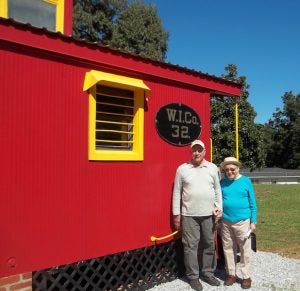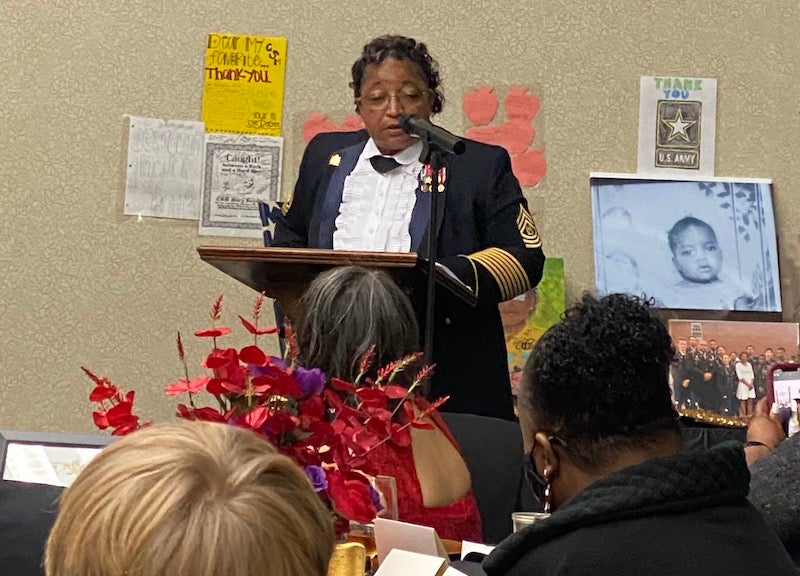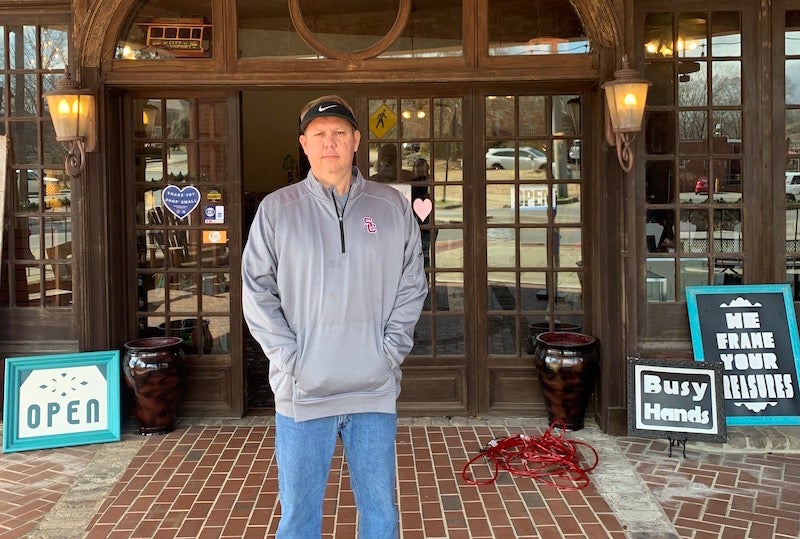Little red caboose finds new life as special feature of McGaughy Farm
Published 11:25 am Thursday, October 26, 2017
By NANCY WILSTACH / Community Columnist
Heading north on the curves of Salem Road, before you get to Shelby 22 and Jones’s Country Store, you have probably noticed that bright red caboose.
No railroad tracks … just a bright red caboose with bright yellow ladders and ironwork.

H.G. and Doris McGaughy spruced up this little red caboose on Salem Road. (Contributed/Nancy Wilstach)
If you are like most of us, you notice the trim white farmhouse, too … and you spot the wide iron gates that almost always stand open. Then, if you slow down a bit, you will see a sign telling you this is the “McGaughy Farm 1840.”
The 120-acre farm was founded by H.G. McGaughy’s great-great uncle, Washington McGaughy.
H.G. and Doris McGaughy have lived here for all but a few months of the 58 years of their married life. The caboose, however, is a relatively new arrival.
“My daddy got it down at Wilton for $5 during the Depression,” McGaughy, 81, said. And that was when $5 was a lot of money.
The caboose did not roll along the railroad tracks that slice through Wilton. It rode to Wilton on a flat car. Its working life was spent on narrow-gauge track as part of the rail line at the Woodward Iron Co., McGaughy said.
“Daddy used it as a tool house.” That was at the senior McGaughy’s home on Alabama 25 across from what then was Brown Moulding.
When McGaughy got the caboose, he had it moved to his farm on a flatbed truck. It was in sad shape.
However, it looks right snazzy these days, and it even bears a sign that says “Woodward Iron Co. No. 32.”
The sign is a story, too, McGaughy said. “I spotted that sign in an antique shop 15 or 20 years ago, and I knew I had to have it. It cost me $250, and the lady wouldn’t come off the price,” he said.
The sign once hung on the side of an active Woodward Iron Co. caboose.
Fixing up the railway relic has been a McGaughy past-time for a good many years now. Doris stripped the beadboard ceiling and restored the original finish. H.G. carefully replaced windows and wielded that paintbrush.
The exterior ironwork is an exact duplicate of some McGaughy traced at the Heart of Dixie Railroad Museum on a similar caboose. He took his tracings to an ironworker’s shop in Brierfield for reproduction.
The main room features an authentic caboose stove. “We found that in Marion or, maybe Greensboro,” he said. The center opens upward to the observation cupola.
Both McGaughys have a fascination with railroading. They have traveled to Lancaster County, Pennsylvania, to visit what may be the nation’s only caboose motel.
What once was a garage became Doris’s train room. She has meticulously designed an extensive model train layout in a room with railroad-themed clocks, train souvenirs, train toys and a freight train wallpaper border. When she was a little girl, she said, “I always wanted a toy train.”








